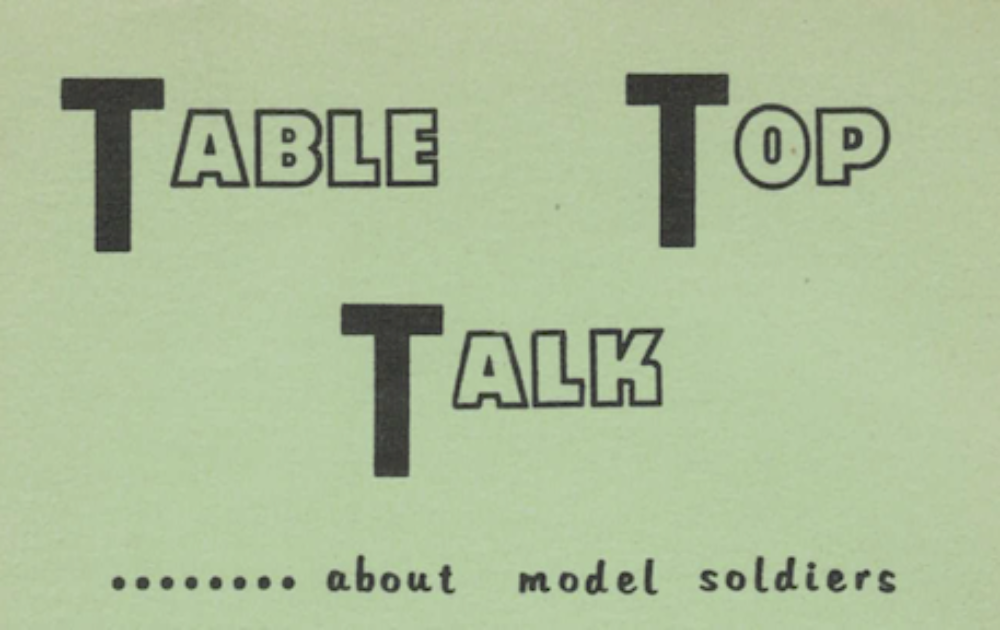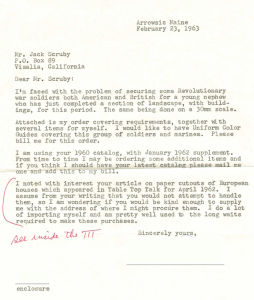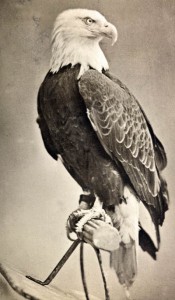Looking for something else in my box of ‘printed Scruby things’ I came across a few letters to/from customers. One of the commonly asked for pieces of information concerned uniform color. I came across several pieces of information, some were simple descriptions that Jack would mail back as a reply to these queries and others were found in the pages of Scruby catalogs. Today I’m posting an example of the type of information provided via various Scruby catalogs; concerning the American Revolution.
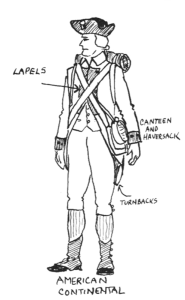 AMERICAN INFANTRY
AMERICAN INFANTRY
American Revolution, 1775-83
CONTINENTALS wore a brown or blue long-tailed coat, with Regimental colors on the cuffs, lapels and turnbacks. These can be Red, White, etc., since each State regiment in t~e Continental Army had its own color. Vest and Pants are either white or a buff color. Gray sox with black leggings and shoes. All belts, and the haversack (on the left hip) are white canvas, and the wooden canteen generally was red with the State name on the side (Example: N.Y . for New York). The tricorne hat is black, and often was edged with white tape.
PENNSYLVANIA RIFLEMEN wore buckskin jackets, buff pants, red knapsack, white belts, black tricorne hat, while sox, leggings and shoes were the same as the Continental. MORGAN’S RIFLES wore a distinctive brim hat, with one side turned up (black), and white buckskin jacket and pants, usually with brown shoes or moccasins. The belts were usually of brown deerskin or leather. The fringes on the buckskin clothing of both Morgan’s and the Pennsylvania Rifle Regiments were often colored red or yellow.
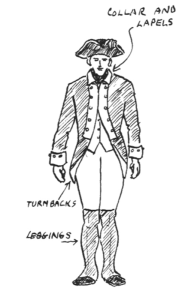 BRITISH SOLDIERS
BRITISH SOLDIERS
AMERICAN REVOLUTION, 1775-83
A British Regiment of this ‘period consisted of 8 companies of enlisted men called the “Battalion” companies, one company of Light Infantry (for skirmishing purposes) and one company of Grenadiers (the elite heavy assault troops). Generally the Grenadiers of various Regiments were brigaded together into one unit, as were the Light Infantry.
The BATTALION SOLDIER always wore the tricorne hat (as illustrated) while the GRENADIER wore a black bearskin with a silver plaque on front. Otherwise they wore the same uniform as the BATTALION soldier. The tricorne was black with white tape around the edge. The coat is brick red, with Regimental colors on the collar, cuffs, lapels and turnbacks. These Regimental colors can be yellow, blue, white,’ etc. depending on the particular regiment. Buttons on the coat are silver or brass. The neck cloth was black, while the vest, pants.and all belts are white. Some troops wore haversacks (on the left hip) and these generally were tan or white canvas. Leggings (which came above the knee) are black with silver buttons down the side. Shoes and cartridge box are black. Knapsacks were generally tan colored leather, with grey blanketroll on top.
Edit/Addition – 3 March 2015:
It didn’t seem fair to tease you with mention of actual letter from customers; as such, presented for your review is an example of the types of letter received by Scruby Miniatures:
More news later this week…
